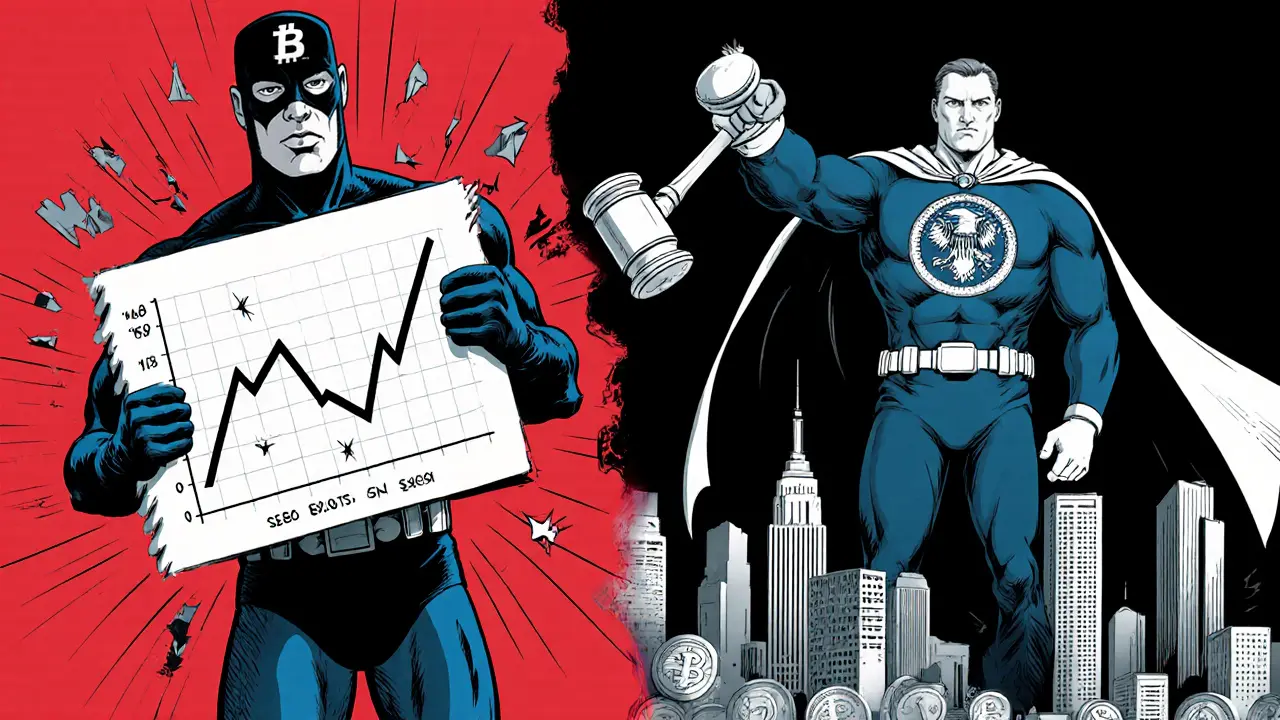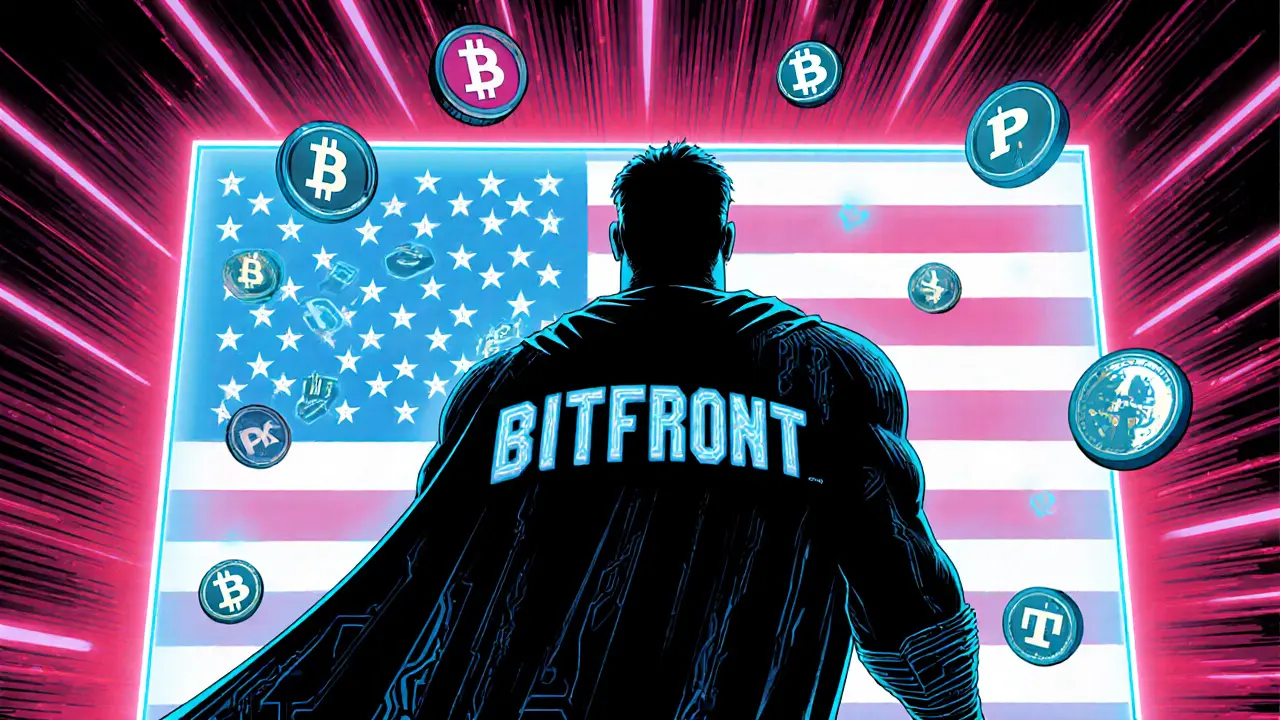Crypto Exchange Fee Calculator
Compare Monthly Trading Costs
Calculate the monthly fee difference between Bitfront and leading exchanges based on your trading volume.
Your Monthly Trading Costs
Bitfront
Maker/Taker Fee: 0.20%
$0.00
Binance
Maker/Taker Fee: 0.10%
$0.00
Coinbase
Maker/Taker Fee: 0.50%
$0.00
Fee Difference
Bitfront costs $0.00 more than Binance each month.
Key Takeaways
- Bitfront charges the same fee for makers and takers (0.20%)
- Binance offers lower fees (0.10%) but requires more trading volume to qualify for discounts
- Coinbase charges higher fees (0.50%) but offers more user-friendly experience
When it launched in 2018, Bitfront was a US‑focused cryptocurrency exchange that promised "simple trading for American investors." Fast forward to 2025, the platform is listed as dead on multiple exchange‑graveyard sites. This Bitfront review walks through the exchange’s timeline, features, pitfalls, and why it vanished - plus what the story tells us about today’s crypto market.
Quick History and Why It Shut Down
Bitfront started operations in July 2018, positioning itself as one of the few U.S.‑friendly exchanges at a time when most major platforms avoided American users due to SEC scrutiny. The exchange offered seven crypto pairs - BTC, ETH, BCH, LINK, PAX, TUSD and USDT - with Bitcoin as the base currency.
Peak activity came in September 2021 when 24‑hour trading volume hit $488 million, ranking #28 globally on CoinMarketCap. By December 2021 volume fell to $356 million, and the website went offline in early 2022. The SEC’s 2021 enforcement wave against unregistered platforms sealed its fate, and by March 2022 the domain redirected to a parking page.
Core Features (What Traders Got)
- Web‑only access - No mobile app, no public API.
- Basic order types: market and limit orders only.
- Live‑chat support in 15+ languages, praised for real‑person Spanish agents.
- KYC required: ID + proof of address, average verification 48‑72 hours.
- Standard security claims - two‑factor authentication and cold storage (details never published).
While the UI was clean enough for beginners, power traders missed charting tools, stop‑loss orders, and any API for bots.
Fee Structure & Cost Comparison
Bitfront never released a detailed fee schedule, but user surveys suggested maker‑taker fees landed around 0.20 % - comparable to mid‑tier exchanges. Below is a snapshot of typical fees versus three industry giants.
| Exchange | Maker Fee | Taker Fee | Mobile App |
|---|---|---|---|
| Bitfront | 0.20 % | 0.20 % | No |
| Binance | 0.10 % | 0.10 % | Yes |
| Coinbase | 0.50 % | 0.50 % | Yes |
| Kraken | 0.16 % | 0.26 % | Yes |

Security & Compliance Gaps
Bitfront never published a security audit or detailed custodial process. The platform claimed standard industry practices - two‑factor authentication, encrypted wallets, and a portion of assets in cold storage - but third‑party verification was absent.
Regulatory compliance was the Achilles’ heel. The exchange marketed itself to U.S. users without registering with the SEC, directly contravening the 2021 enforcement notice that targeted “unregistered trading platforms.” Analysts at Delphi Digital and Deloitte both flagged this as a fatal risk. When the SEC began cracking down, Bitfront lacked the legal framework to stay open, leading to its abrupt shutdown.
User Experience - What Traders Said
Only three user reviews remain on Cryptogeek, averaging 3.7/5. Positive notes centered on multilingual live chat and a beginner‑friendly interface. Complaints were louder: withdrawal delays up to 11 business days, verification bottlenecks, and occasional deposit address generation failures.
Reddit threads in late 2021 show a growing sense of “is this still alive?” with 47 comments probing the exchange’s status. Trustpilot users highlighted the same withdrawal pain points, and CryptoSlate’s 2.8/5 rating reflected a broader dissatisfaction with customer service.
Market Position vs. Competitors
Compared to industry leaders, Bitfront’s limitations were stark.
- Asset variety: 7 pairs vs. Binance’s 350+.
- Liquidity: $356 M 24‑h volume vs. Coinbase’s $15.2 B (Dec 2021).
- Mobile & API: absent vs. full‑suite mobile apps and REST/WebSocket APIs on Binance, Coinbase, Kraken.
- Regulatory standing: non‑registered vs. registered brokers (Coinbase, Kraken).
These gaps meant Bitfront could only attract a niche of beginner U.S. traders looking for a simple web portal.

Lessons Learned - Why the Collapse Matters Today
Bitfront’s story is a textbook case of regulatory non‑compliance meeting market pressure.
- Know the rules. U.S. crypto firms must either register as a broker‑dealer or obtain a specific license. Ignoring the SEC is a fast track to closure.
- Liquidity matters. Even a brief dip from $488 M to $356 M reflected thinning order books, making withdrawals slower and user trust erode.
- Product depth wins. Traders now expect mobile apps, staking, futures, and API access. A web‑only, seven‑coin platform can’t compete.
- Customer support is a differentiator. Real‑person multilingual chat helped Bitfront early on, but once liquidity and compliance issues surfaced, support could not rescue reputation.
- Transparency builds confidence. Publishing audits, fee tables, and security architecture is now standard; Bitfront’s silence on these topics was a red flag.
Gartner predicts 60 % of non‑compliant exchanges will vanish by 2026 - Bitfront was an early example.
Quick Comparison Table
| Metric | Bitfront | Coinbase | Kraken |
|---|---|---|---|
| 24‑h Volume | $356 M | $15.2 B | $4.8 B |
| Crypto Pairs | 7 | ~200 | ~120 |
| Mobile App | No | Yes | Yes |
| API Access | No | Yes | Yes |
| Regulatory Status | Unregistered (US) | Registered Broker‑Dealer | Registered Broker‑Dealer |
| User Rating (2021) | 3.7/5 | 4.5/5 | 4.3/5 |
FAQs About Bitfront
Is Bitfront still operating in 2025?
No. The exchange’s website has been offline since early 2022 and all reputable exchange‑watch sites list it as dead.
What made Bitfront different from other US exchanges?
Its main selling point was “US‑friendly” access at a time when many platforms barred American users. It also offered live‑chat support in many languages.
Were Bitfront’s security measures reliable?
The exchange claimed standard security (2FA, cold storage) but never published third‑party audits, so confidence was limited.
Why did Bitfront shut down?
Regulatory pressure from the SEC combined with dropping liquidity and withdrawal delays forced the platform to cease operations.
Can I still withdraw assets from Bitfront?
No. Since the service is offline, funds left on the platform are likely unrecoverable. Users were advised to withdraw before the shutdown.
How does Bitfront compare to Binance?
Binance offers hundreds of coins, a robust mobile app, API, and deep liquidity. Bitfront only had seven pairs, no app, and limited liquidity, making Binance a far stronger choice.
In short, Bitfront’s brief run teaches a clear lesson: without proper regulatory footing and a solid product roadmap, even a well‑intentioned exchange can’t survive the current crypto wave.


PRIYA KUMARI
October 23, 2025 AT 09:13Bitfront was a clueless circus of regulatory ignorance.
Jessica Pence
October 31, 2025 AT 11:40I think the post does a good job summarizin the timeline, but it could use a bit more detail on the KYC process. Also, users should double‑check the fee numbers because they might have changed after 2021. Hope this helps!
Mike Cristobal
November 8, 2025 AT 14:06We must hold platforms accountable for flirting with illegal activity. The SEC isn’t a suggestion, it’s the law. :)
Anna Kammerer
November 16, 2025 AT 16:33Wow, talk about a classic case of “too little, too late.” Bitfront tried to be friendly with a live‑chat, but that’s like putting a band‑aid on a broken bridge. Still, kudos for the multilingual agents – they were the only decent thing about the whole mess.